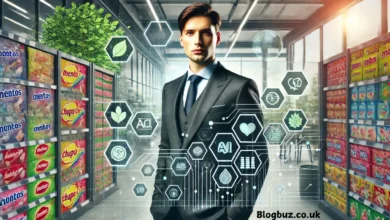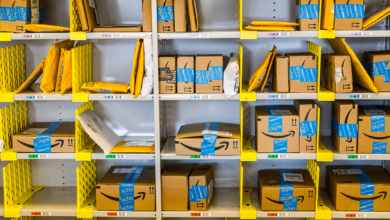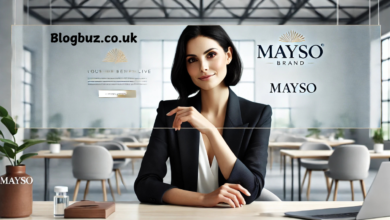Popcorn Boxes: Designing for Convenience, Style, and Sustainability

Popcorn boxes have transcended their traditional role as mere containers for holding snacks. Today, they represent an intersection of practicality, aesthetic appeal, and eco-consciousness. From cinemas to carnivals, popcorn boxes are ubiquitous, offering an opportunity for businesses to showcase their creativity and commitment to sustainability. This article explores the evolution of popcorn box design, emphasizing the importance of convenience, style, and sustainability in modern packaging.
The Functional Role of Popcorn Boxes
At their core, popcorn boxes are designed to serve a practical purpose: to hold and transport popcorn. However, this seemingly simple function requires a thoughtful approach to design. Popcorn is a lightweight yet voluminous snack that can be greasy or crumbly. As such, the packaging must meet specific criteria, including sturdiness, ease of use, and protection against spills or leaks.
Convenience is paramount. Consumers often enjoy popcorn in settings where mobility and accessibility are crucial, such as movie theaters, outdoor events, or fairs. A well-designed popcorn box allows users to enjoy their snack without hassle. Features like ergonomic handles, foldable designs, and stable bases enhance usability, making the experience more enjoyable.
Style and Aesthetic Appeal in Popcorn Boxes
The visual design of popcorn boxes is equally important. In competitive markets, aesthetics can differentiate one brand or event from another. The design should capture attention, evoke emotion, and align with the branding message. For example, a classic red-and-white striped box immediately conjures images of nostalgia and traditional movie theater experiences, while sleek, minimalist designs appeal to modern sensibilities.
Color schemes, typography, and graphics all play a role in creating visually appealing popcorn boxes. For events, custom designs can incorporate logos, themes, or messages that resonate with attendees. A wedding might feature elegant, personalized popcorn boxes with the couple’s names and date, while a children’s party might use bright, playful designs to delight young guests.
Style also extends to innovative shapes and sizes. While the traditional square or rectangular box remains popular, brands are experimenting with unique silhouettes that stand out. Cone-shaped containers, buckets, or collapsible designs add a touch of novelty while enhancing functionality.
Branding Opportunities with Popcorn Boxes
Popcorn boxes offer a valuable platform for branding. Unlike traditional advertising, which can feel intrusive, branded popcorn boxes subtly promote a business or event while serving a practical purpose. They act as mobile billboards, reaching a wide audience as they’re carried around by consumers.
For businesses, incorporating branding elements such as logos, slogans, or QR codes into popcorn box designs can reinforce brand identity. QR codes, in particular, are an innovative addition, allowing consumers to engage with digital content, such as promotional offers, event details, or social media links.
Event organizers can use custom popcorn boxes to create a cohesive theme. Whether it’s a corporate gathering, festival, or private party, personalized packaging adds a layer of sophistication and memorability. The design becomes a keepsake, reminding attendees of their experience long after the event concludes.
Sustainability in Popcorn Box Design
As environmental concerns grow, sustainability has become a key focus in packaging design. Popcorn boxes are no exception. Traditional packaging materials, such as single-use plastics or coated paper, are increasingly being replaced by eco-friendly alternatives that reduce environmental impact.
Sustainable popcorn boxes prioritize the use of biodegradable, recyclable, or compostable materials. Kraft paper, for example, is a popular choice due to its natural appearance, durability, and eco-friendliness. Water-based inks and adhesives further enhance the sustainability of these boxes, ensuring they break down harmlessly in the environment.
Reusable designs are another innovative approach to sustainability. Sturdy containers that can be repurposed or refilled reduce waste and appeal to environmentally conscious consumers. For instance, a reusable popcorn bucket can serve as a souvenir while promoting long-term sustainability.
Challenges in Designing Sustainable Popcorn Boxes
While the shift toward sustainability is essential, it comes with challenges. Biodegradable materials, for example, may be more expensive or less readily available than conventional options. Ensuring these materials meet food safety standards and maintain the structural integrity required for holding popcorn is another consideration.
Designers must also balance sustainability with aesthetic appeal and functionality. Eco-friendly materials often have a natural, earthy appearance that might not align with every brand’s vision. Overcoming these challenges requires creativity and collaboration between designers, manufacturers, and brands.
Innovations in Popcorn Box Design
The evolution of popcorn boxes is marked by continuous innovation. Advances in technology and materials have opened new possibilities for design and functionality.
Interactive designs are gaining popularity. Popcorn boxes with built-in puzzles, games, or augmented reality (AR) features create a unique experience for consumers. These elements are particularly appealing to families or younger audiences, transforming the packaging into an engaging activity.
Smart packaging is another emerging trend. Embedded QR codes or near-field communication (NFC) tags allow consumers to access digital content, such as movie trailers, event schedules, or promotional campaigns. This technology bridges the gap between physical packaging and digital interaction, enhancing the consumer experience.
Additionally, modular and collapsible designs improve convenience and sustainability. Foldable popcorn boxes reduce storage and transportation costs while minimizing their environmental footprint. These designs are especially beneficial for large-scale events or businesses that require bulk orders.
The Unboxing Experience
The unboxing experience is a significant aspect of modern packaging design. Popcorn boxes, despite their simplicity, contribute to this trend by incorporating creative elements that delight consumers. Unique closures, die-cut patterns, or surprise messages inside the box can elevate the unboxing moment, making it memorable and shareable on social media.
For premium events or brands, luxurious touches like metallic finishes, embossed logos, or custom inserts add a sense of exclusivity. These details not only enhance the perceived value of the packaging but also create an emotional connection with consumers.
Cultural and Regional Influences on Popcorn Box Design
Popcorn boxes also reflect cultural and regional influences. In the United States, the classic striped design is synonymous with movie theaters and carnivals. In contrast, other countries might favor minimalist or artisanal designs that cater to local aesthetics.
Understanding these cultural nuances is essential for businesses looking to expand internationally. Tailoring popcorn box designs to suit regional preferences ensures greater acceptance and appeal, fostering a stronger connection with diverse audiences.
The Future of Popcorn Box Design
The future of popcorn box design lies at the intersection of convenience, style, and sustainability. As consumer expectations evolve, packaging will continue to adapt, embracing new materials, technologies, and creative concepts.
Personalization is expected to play a significant role. Advances in digital printing allow for small-batch production of custom designs, enabling businesses to create unique packaging for specific events, seasons, or campaigns. This level of customization enhances consumer engagement and builds brand loyalty.
Sustainability will remain a driving force, with innovations in biodegradable materials, zero-waste designs, and carbon-neutral manufacturing processes. Collaboration between industries will be essential to achieve these goals, ensuring that packaging meets environmental standards without compromising functionality or aesthetics.
Conclusion
Custom boxes are more than just containers; they are a testament to the creativity, innovation, and values of the brands and events they represent. By focusing on convenience, style, and sustainability, designers and manufacturers can create packaging that resonates with consumers, enhances their experience, and reflects a commitment to environmental stewardship. As the demand for thoughtful and impactful packaging grows, the humble popcorn box will continue to evolve, delighting audiences and leaving a lasting impression.




